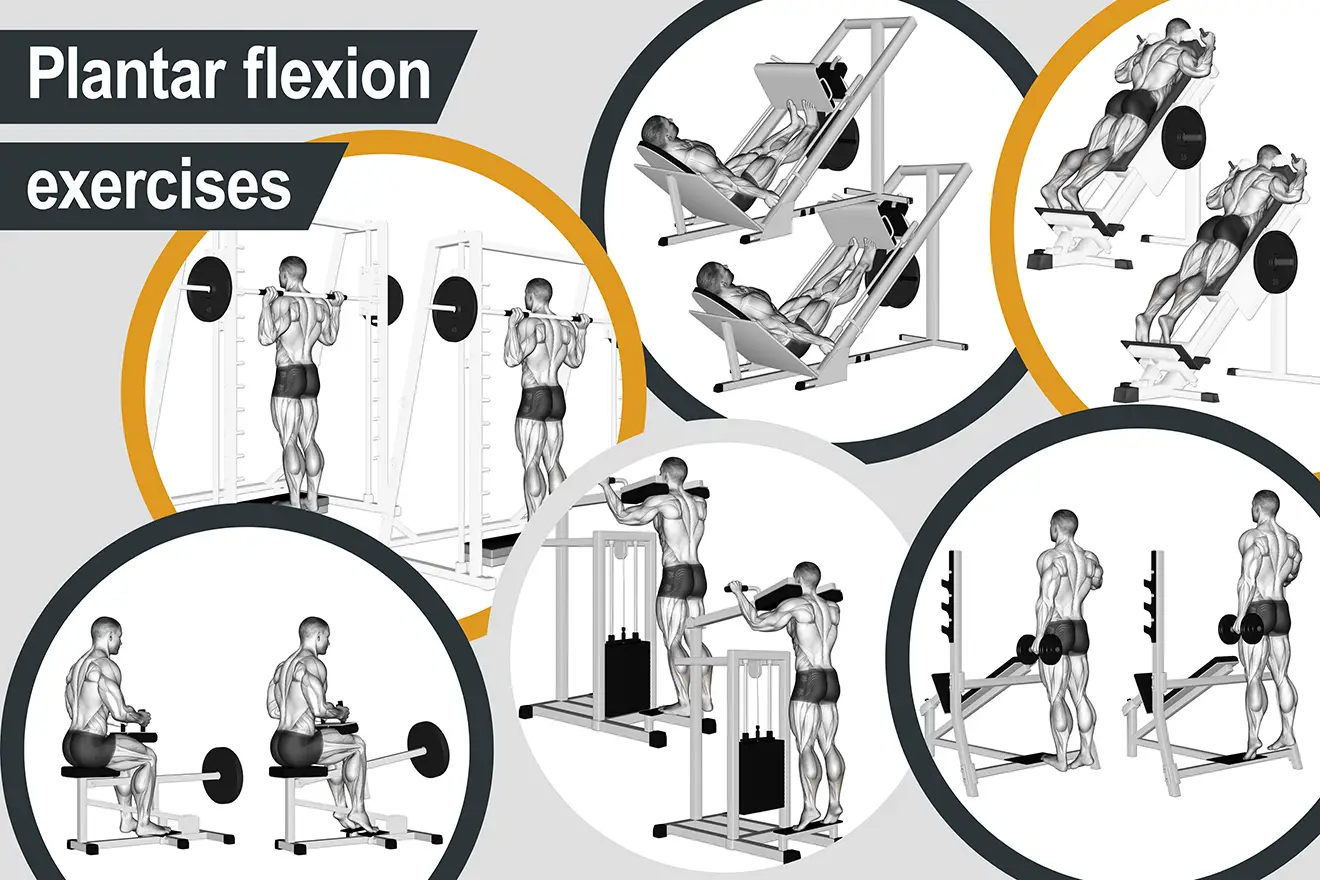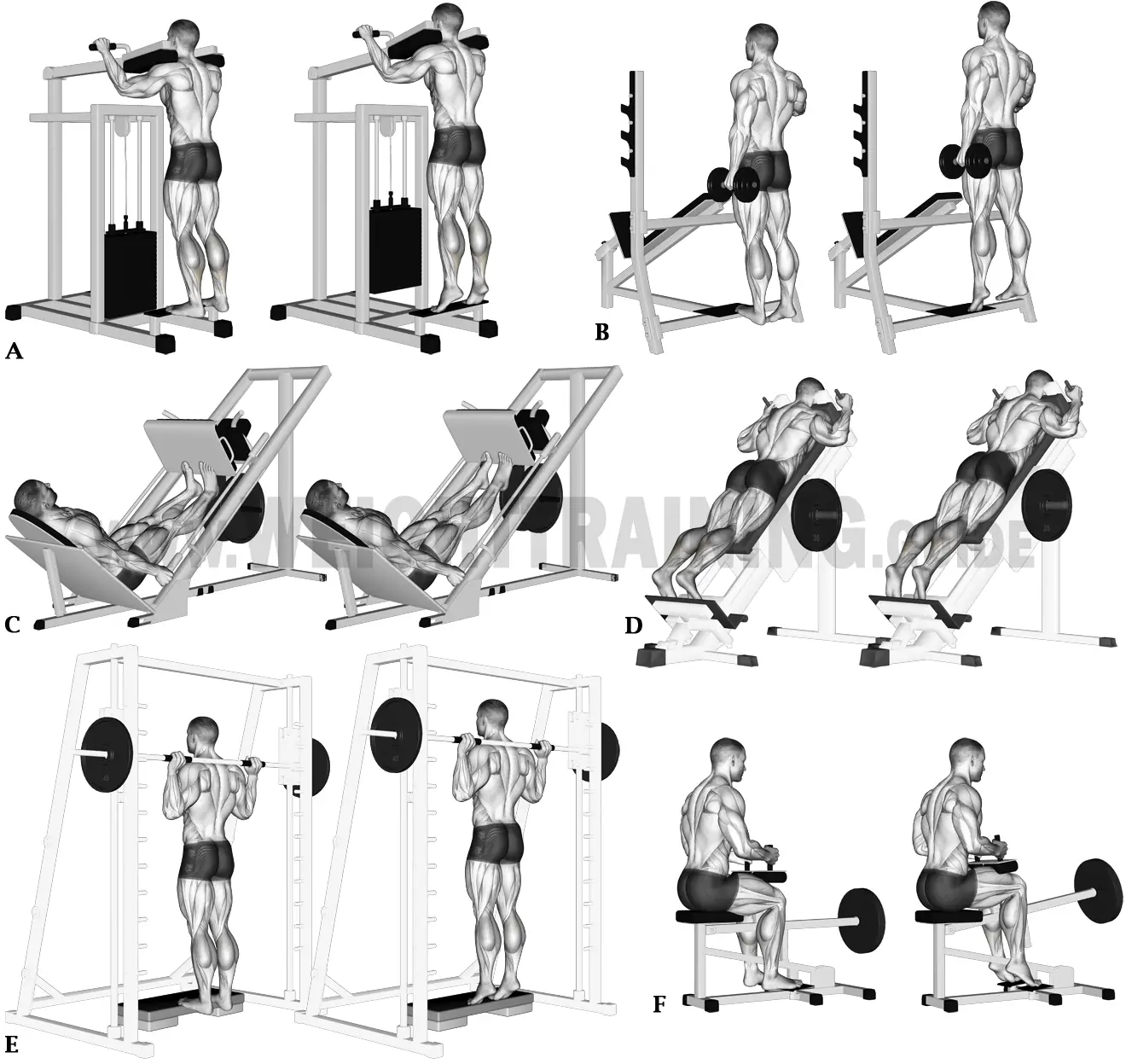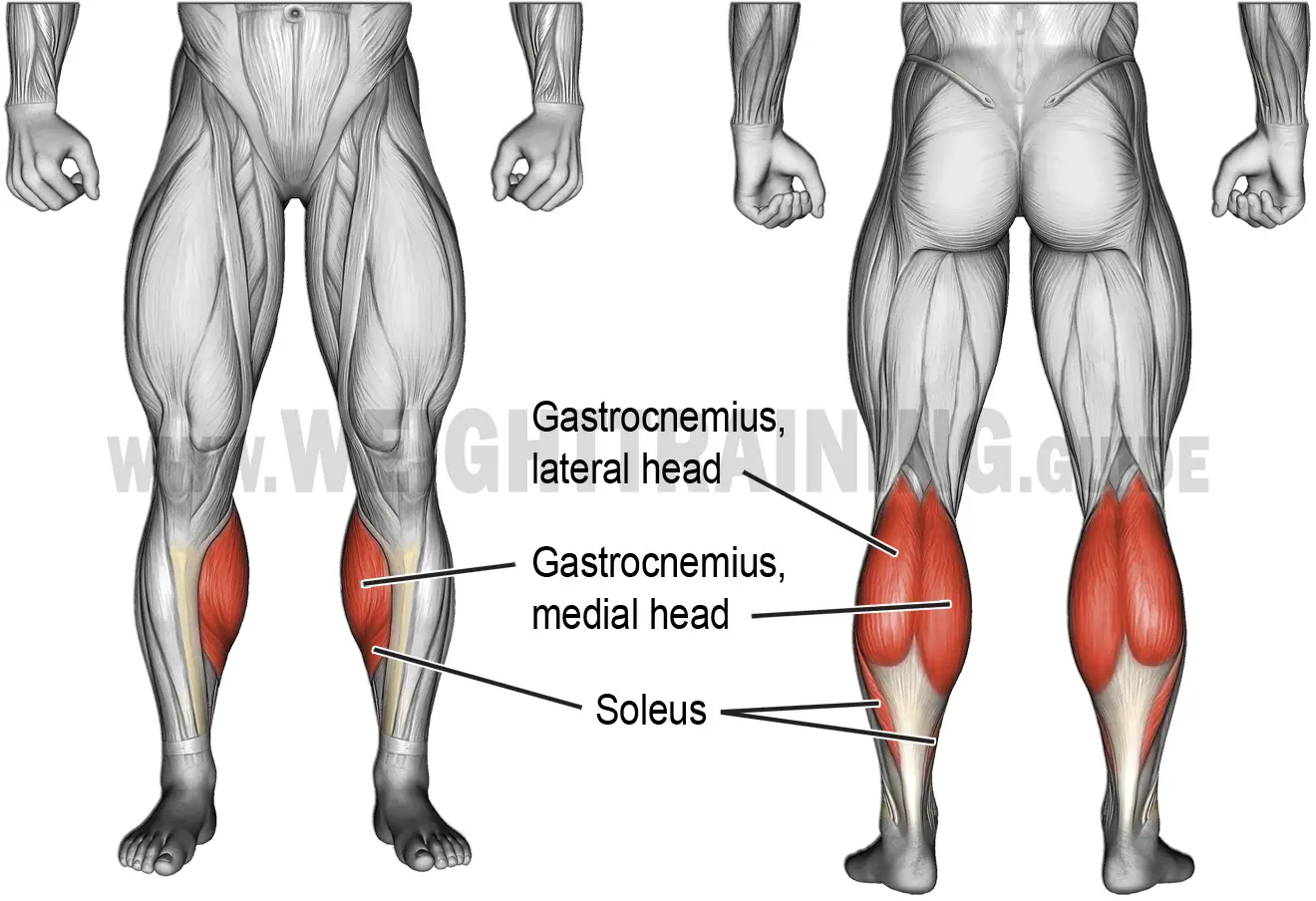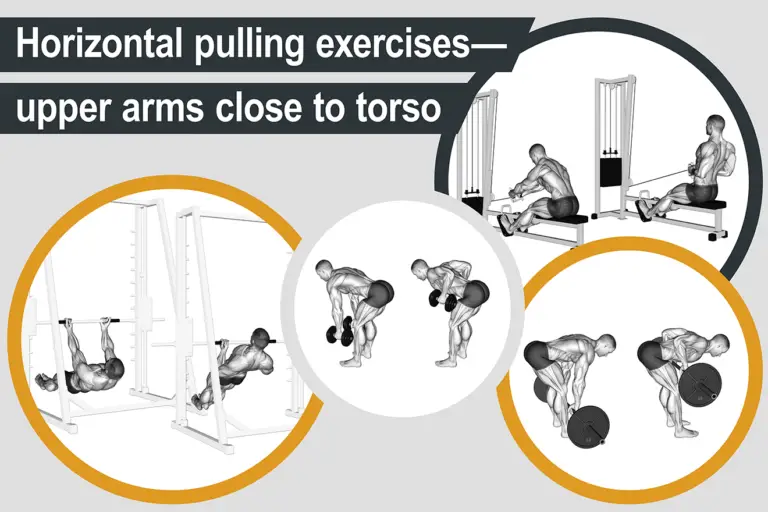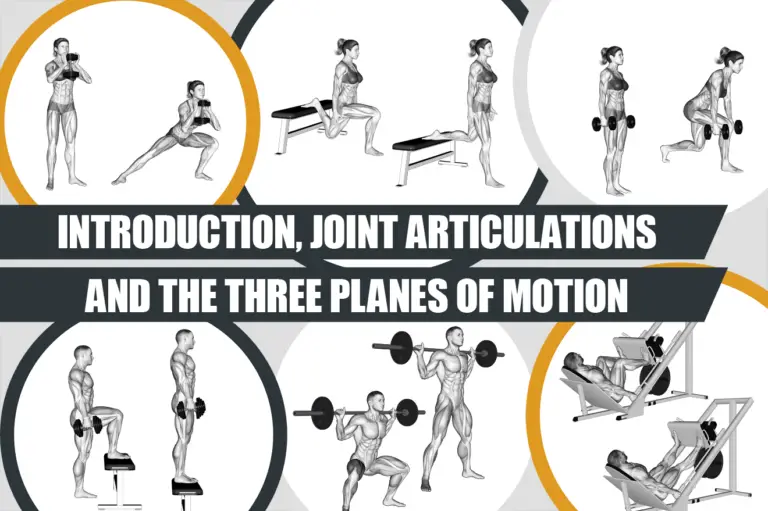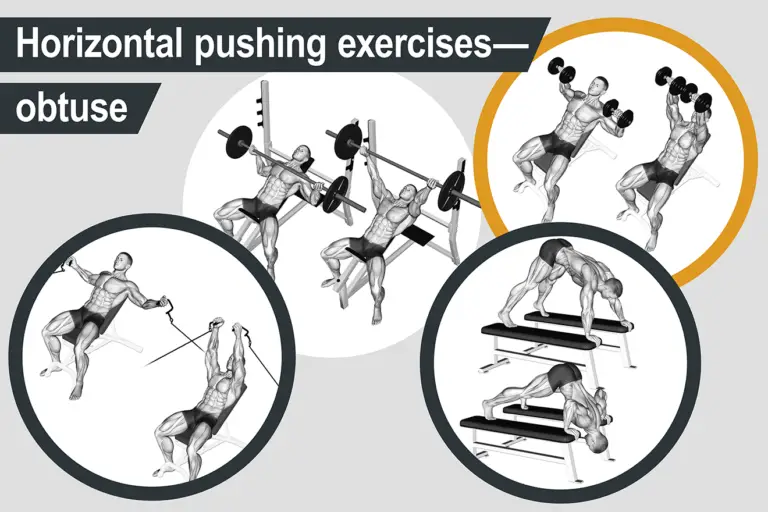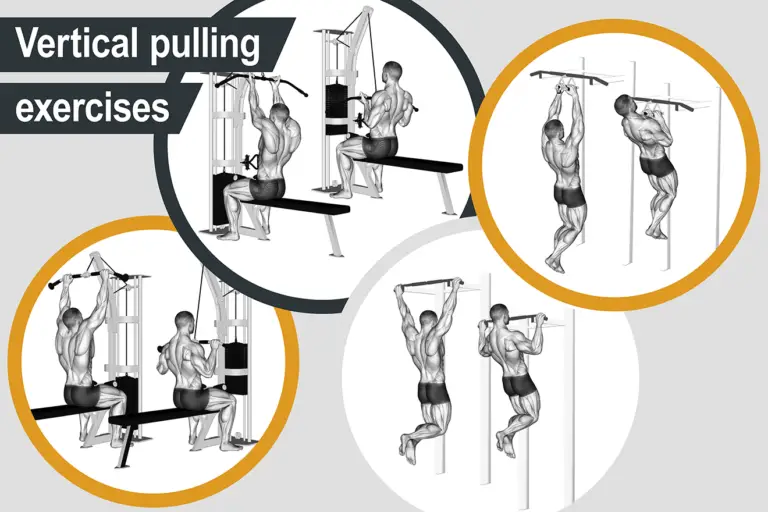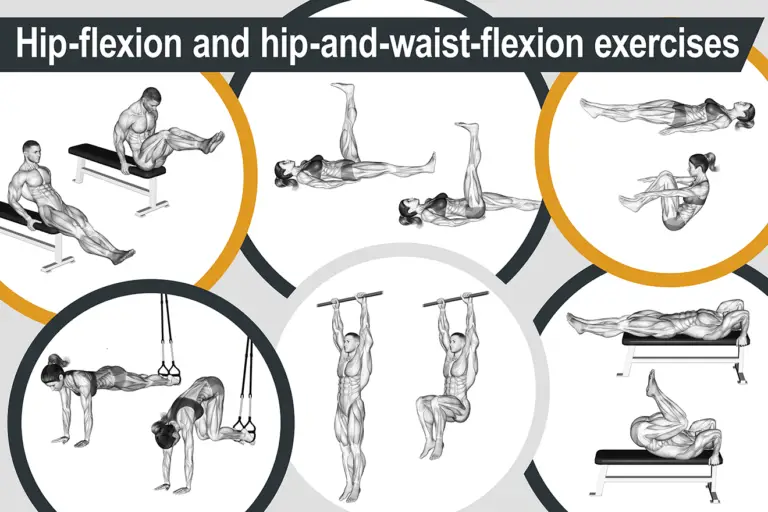Plantar flexion exercises
Movement patterns and classification
Plantar flexion exercises (for example, Figure 1) involve lifting a weight or your bodyweight by flexing your ankle, a movement pattern that’s often known as plantar flexion. As only a single joint is utilized, plantar flexion exercises are classified as isolation.
Figure 1. Examples of plantar flexion exercises. A. machine standing calf raise; B. standing dumbbell single-leg calf raise; C. sled 45-degree calf press; D. prone hack machine calf raise; E. Smith machine calf raise; F. machine seated calf raise.
Muscle activation
All plantar flexion exercises activate your soleus and gastrocnemius, which together make up your calf (Figure 2). If your knee is extended, such as with the machine standing calf raise (Figure 1, A), your gastrocnemius will be the target. On the other hand, if your knee is flexed, such as with the machine seated calf raise (Figure 1, F), your soleus will be the target. The reason is that, as explained in Knee-flexion exercises, your gastrocnemius becomes loose when your knee is flexed, forcing your soleus to do more of the work.
Figure 2. Main muscles activated by plantar flexion exercises.
Your gastrocnemius has a medial (inner) head and a lateral (outer) head. When you perform the exercises that target your gastrocnemius, if you turn your toes outward, you will emphasize your medial head, whereas if you keep your toes pointing forward or turn them inward, you will activate both heads approximately equally.

